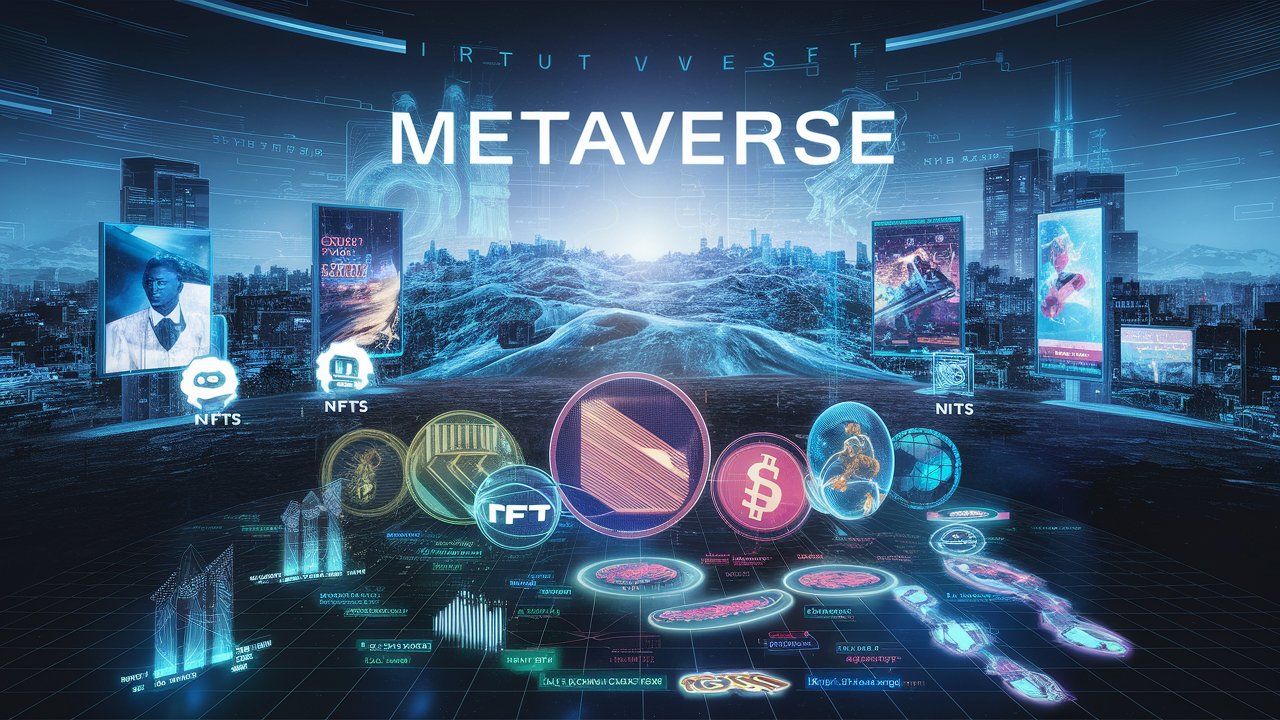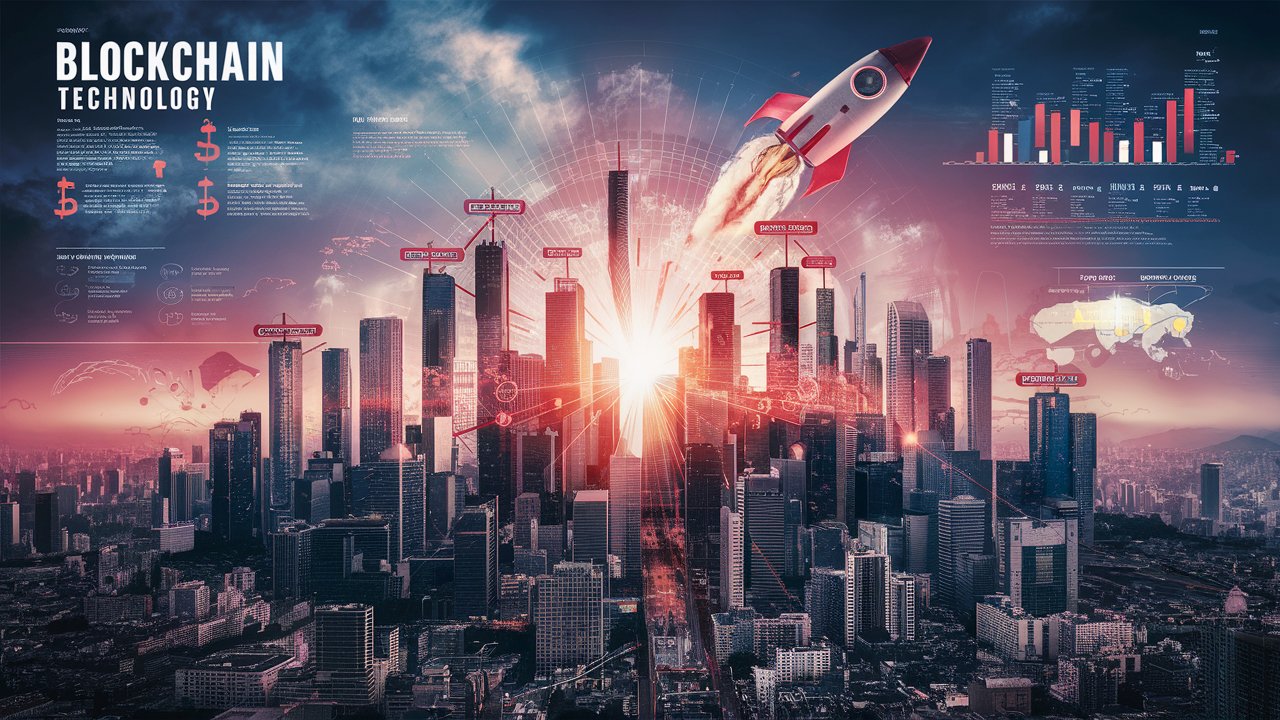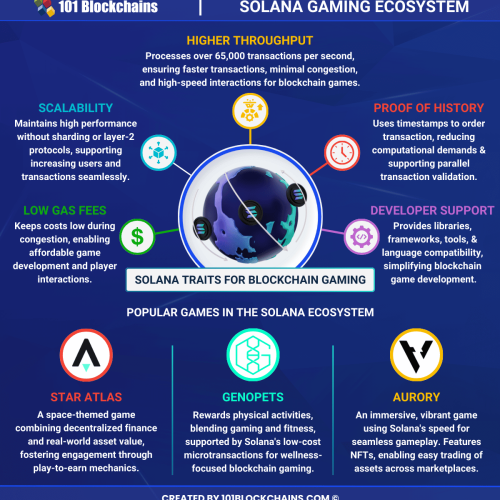In today’s rapidly evolving technological landscape, businesses are constantly seeking innovative solutions to enhance their operations, security, and efficiency. One such groundbreaking technology that has gained significant traction in recent years is the permissioned blockchain. As organizations across various industries explore the potential of blockchain technology, understanding the best practices for implementing a permissioned blockchain has become crucial for successful enterprise blockchain deployment. This comprehensive guide will delve into the intricacies of permissioned blockchain implementation, exploring the key considerations, challenges, and strategies that businesses should keep in mind when venturing into this transformative technology. Whether you’re a seasoned IT professional or a business leader looking to leverage blockchain for your organization, this article will provide valuable insights into the world of permissioned blockchains and how to implement them effectively. Table of Contents <a name=”understanding-permissioned-blockchain”></a> 1. Understanding Permissioned Blockchain Before diving into the best practices for implementing a permissioned blockchain, it’s essential to understand what sets this technology apart from its public counterpart. A permissioned blockchain, also known as a private blockchain, is a distributed ledger technology (DLT) that operates within a closed network of known participants. Unlike public blockchains such as Bitcoin or Ethereum, permissioned blockchains restrict access to pre-approved entities, offering greater control over who can participate in the network and perform specific actions. Key characteristics of permissioned blockchains include: <a name=”key-benefits”></a> 2. Key Benefits of Permissioned Blockchain for Enterprises Implementing a permissioned blockchain can offer numerous advantages for businesses across various sectors. Some of the key benefits include: <a name=”best-practices”></a> 3. Best Practices for Permissioned Blockchain Implementation When implementing a permissioned blockchain for your business, following best practices is crucial to ensure a successful deployment and maximize the technology’s benefits. Here are some key best practices to consider: 3.1. Define Clear Objectives and Use Cases Before embarking on a permissioned blockchain implementation, it’s essential to clearly define your organization’s objectives and identify specific use cases that can benefit from the technology. This step will help you align your blockchain strategy with your business goals and ensure that the implementation delivers tangible value. 3.2. Choose the Right Blockchain Platform Selecting the appropriate blockchain platform is crucial for the success of your implementation. Consider factors such as scalability, performance, security features, and ease of integration with existing systems. Popular permissioned blockchain platforms include Hyperledger Fabric, R3 Corda, and Quorum. 3.3. Design a Robust Network Architecture Carefully plan your network architecture to ensure optimal performance, security, and scalability. Consider factors such as the number and distribution of nodes, consensus mechanisms, and data storage solutions. A well-designed architecture will form the foundation for a successful permissioned blockchain implementation. 3.4. Implement Strong Identity and Access Management Develop a comprehensive identity and access management (IAM) strategy to control who can access the network and what actions they can perform. Implement multi-factor authentication, role-based access control (RBAC), and regular access reviews to maintain the security and integrity of your permissioned blockchain. 3.5. Establish Governance Policies and Procedures Create clear governance policies and procedures to manage the blockchain network effectively. This includes defining roles and responsibilities, establishing decision-making processes, and creating guidelines for network upgrades and changes. 3.6. Ensure Regulatory Compliance Work closely with legal and compliance teams to ensure that your permissioned blockchain implementation adheres to relevant regulations and industry standards. This may include implementing features such as data encryption, audit trails, and privacy-preserving technologies. 3.7. Prioritize Interoperability Design your permissioned blockchain with interoperability in mind to facilitate seamless integration with existing systems and potential future blockchain networks. This approach will help maximize the value of your implementation and future-proof your investment. 3.8. Implement Robust Security Measures Develop a comprehensive security strategy that addresses potential vulnerabilities and threats. This should include encryption of data at rest and in transit, secure key management, regular security audits, and incident response plans. 3.9. Plan for Scalability and Performance Design your permissioned blockchain implementation to accommodate future growth and increased transaction volumes. Consider factors such as network capacity, storage requirements, and transaction processing speeds to ensure that your blockchain can scale effectively as your business needs evolve. 3.10. Provide Adequate Training and Support Invest in training programs to educate your team members and stakeholders about the permissioned blockchain technology, its benefits, and how to use it effectively. Provide ongoing support to ensure smooth adoption and address any challenges that may arise during implementation. <a name=”architecture”></a> 4. Permissioned Blockchain Architecture A well-designed permissioned blockchain architecture is crucial for ensuring optimal performance, security, and scalability. Key components of a permissioned blockchain architecture include: When designing your permissioned blockchain architecture, consider factors such as network topology, data privacy requirements, and performance optimization techniques to create a robust and efficient system. <a name=”governance”></a> 5. Blockchain Governance in Permissioned Networks Effective governance is crucial for the successful operation and maintenance of a permissioned blockchain network. Key aspects of blockchain governance in permissioned networks include: By implementing robust governance structures, organizations can ensure the long-term stability, security, and effectiveness of their permissioned blockchain networks. <a name=”security”></a> 6. Security Considerations for Permissioned Blockchains While permissioned blockchains offer inherent security advantages over public blockchains, implementing strong security measures remains crucial. Key security considerations include: By prioritizing security in your permissioned blockchain implementation, you can minimize risks and build trust among network participants. <a name=”implementation-strategies”></a> 7. Efficient Permissioned Blockchain Implementation Strategies To ensure a successful and efficient permissioned blockchain implementation, consider the following strategies: By adopting these strategies, organizations can streamline their permissioned blockchain implementation process and maximize the technology’s potential benefits. <a name=”setup-guidelines”></a> 8. Private Blockchain Setup Guidelines Setting up a private blockchain requires careful planning and execution. Follow these guidelines to ensure a smooth setup process: By following these guidelines, organizations can establish a solid foundation for their private blockchain network, setting the stage for successful operation and future growth. <a name=”challenges-and-solutions”></a> 9. Challenges and Solutions in Permissioned Blockchain Deployment While permissioned blockchains offer numerous benefits, their implementation can present several challenges. Here are some common challenges and potential solutions: By anticipating these challenges and
The Importance of DAOs in Web3
As we venture further into the digital age, the concept of Decentralized Autonomous Organizations (DAOs) is rapidly gaining traction, especially within the Web3 ecosystem. These innovative organizational structures are poised to revolutionize how we think about governance, collaboration, and decision-making in the digital realm. In this comprehensive exploration, we’ll delve into the significance of DAOs in Web3, examining their potential to reshape various industries and the way we interact with decentralized systems. Before we dive into the importance of DAOs, it’s crucial to establish a clear understanding of what DAOs are and how they fit into the broader context of Web3. What are DAOs? Decentralized Autonomous Organizations (DAOs) are blockchain-based entities that operate through smart contracts and are governed by their members. Unlike traditional organizations with hierarchical structures, DAOs are decentralized, transparent, and autonomous, with decision-making power distributed among token holders. Key characteristics of DAOs include: What is Web3? Web3, often referred to as the “decentralized web,” represents the next evolution of the internet. It’s built on blockchain technology and emphasizes decentralization, user ownership of data, and peer-to-peer interactions without intermediaries. Core principles of Web3 include: DAOs and Web3 are intrinsically linked, with DAOs serving as a foundational element in the Web3 ecosystem. Here’s how they complement each other: a) Decentralized Governance DAOs embody the decentralization ethos of Web3 by distributing decision-making power among community members. This aligns perfectly with Web3’s goal of reducing reliance on centralized authorities. b) Transparency and Trust Both DAOs and Web3 prioritize transparency. DAOs achieve this through open-source code and on-chain voting, while Web3 leverages blockchain technology to create transparent and immutable records. c) Community Empowerment Web3 aims to give users more control over their digital lives, and DAOs provide a practical framework for community-driven governance and decision-making. d) Interoperability DAOs can interact with various Web3 protocols and applications, facilitating seamless integration within the decentralized ecosystem. The integration of DAOs into Web3 ecosystems offers numerous advantages: a) Enhanced Democracy and Participation DAOs enable direct participation in decision-making processes, fostering a more democratic approach to governance. This is particularly relevant in Web3, where user empowerment is a core principle. b) Reduced Hierarchy and Bureaucracy By automating many organizational processes through smart contracts, DAOs minimize the need for traditional hierarchical structures, aligning with Web3’s goal of reducing intermediaries. c) Global Collaboration DAOs facilitate collaboration among individuals worldwide, transcending geographical boundaries. This global reach is a key feature of Web3’s vision for a borderless digital economy. d) Increased Transparency All actions and decisions in a DAO are recorded on the blockchain, ensuring complete transparency. This aligns with Web3’s emphasis on open and verifiable systems. e) Alignment of Incentives Through token-based governance, DAOs can align the incentives of all stakeholders, encouraging active participation and long-term commitment to the organization’s goals. DAOs are finding applications across various sectors within the Web3 ecosystem: a) Decentralized Finance (DeFi) Many DeFi protocols, such as MakerDAO, utilize DAO structures for governance. Token holders can vote on key parameters like interest rates and collateralization ratios. b) NFT Platforms DAOs are being used to manage NFT collections and marketplaces. For instance, PleasrDAO is a collective that acquires and manages high-value NFTs. c) Social Media and Content Creation Decentralized social media platforms like Aave’s Lens Protocol incorporate DAO-like governance structures, allowing users to have a say in platform development and content moderation policies. d) Venture Capital and Investment Investment DAOs like MetaCartel Ventures allow members to pool resources and collectively decide on investment strategies in the Web3 space. e) Charity and Philanthropy DAOs like Gitcoin are revolutionizing charitable giving by allowing community members to vote on fund allocation and project selection. f) Gaming and Virtual Worlds Blockchain-based games and virtual worlds often incorporate DAO structures for in-game governance. Decentraland is a prime example, where MANA token holders can vote on various aspects of the virtual world. While DAOs offer numerous benefits, they also face several challenges in the Web3 ecosystem: a) Regulatory Uncertainty The legal status of DAOs remains unclear in many jurisdictions, posing potential regulatory risks. b) Security Concerns Smart contract vulnerabilities can pose significant risks to DAOs, as demonstrated by the infamous 2016 “The DAO” hack. c) Scalability Issues As DAOs grow, decision-making processes can become slow and cumbersome, potentially hampering efficiency. d) Voter Apathy Ensuring consistent participation from all token holders can be challenging, potentially leading to governance dominated by a small, active minority. e) Complexity for New Users The technical complexity of participating in DAOs can be a barrier for newcomers to the Web3 space. As Web3 continues to evolve, DAOs are likely to play an increasingly important role: a) Integration with Real-World Assets We may see DAOs managing real-world assets, blurring the lines between traditional and decentralized finance. b) Improved User Interfaces As DAO platforms mature, we can expect more user-friendly interfaces that make participation accessible to a broader audience. c) Hybrid Governance Models Future DAOs might combine elements of decentralized and traditional governance to optimize decision-making processes. d) Interoperable DAOs Cross-chain compatibility and interoperability between DAOs could lead to more complex and powerful organizational structures. e) AI Integration Artificial intelligence could be integrated into DAOs to assist with decision-making and automate certain governance processes. For those interested in engaging with DAOs in the Web3 ecosystem, here are some key considerations: a) Choosing a DAO Platform Several platforms facilitate DAO creation and management: b) Understanding Token Economics Carefully consider the token distribution and voting mechanisms of a DAO before participating. c) Active Participation Engage in discussions, propose ideas, and participate in voting to make the most of your DAO membership. d) Continuous Learning Stay informed about the latest developments in DAO technology and governance models. e) Risk Management Diversify your participation across multiple DAOs and be aware of the potential risks involved. Smart contracts are the backbone of DAOs, enabling automated and trustless execution of organizational rules and decisions. Here’s how they contribute to the importance of DAOs in Web3: a) Automated Governance Smart contracts automate the execution of decisions made
How Will AI Improve Customer Experience in 2024?
As we approach 2024, the landscape of customer experience (CX) is undergoing a profound transformation, driven by rapid advancements in artificial intelligence (AI). This technology is not just enhancing existing CX strategies; it’s revolutionizing the very nature of how businesses interact with their customers. In this comprehensive exploration, we’ll delve into the ways AI is set to improve customer experience in 2024, examining current trends, emerging technologies, and the potential impact on businesses and consumers alike. Before we look ahead to 2024, it’s essential to understand how AI has evolved in the realm of customer experience: a) Early Adoption (2010s) b) Current State (Early 2020s) c) Looking Ahead (2024 and Beyond) As we look towards 2024, several AI technologies are poised to significantly impact customer experience: a) Advanced Natural Language Processing (NLP) By 2024, NLP is expected to reach new heights of sophistication. AI-powered systems will be able to understand and respond to customer queries with near-human levels of comprehension, including: Companies like OpenAI and Google AI are at the forefront of these advancements, continually pushing the boundaries of what’s possible in language understanding and generation. b) Predictive Analytics and Machine Learning AI’s ability to analyze vast amounts of data and predict future outcomes will be a game-changer for CX in 2024: Platforms like Salesforce Einstein are already leveraging AI for predictive analytics in CRM, and we can expect even more powerful capabilities by 2024. c) Emotional AI and Sentiment Analysis Understanding and responding to customer emotions will be a key differentiator in 2024: Companies like Affectiva are pioneering emotion recognition technology that could be integrated into various customer touchpoints. d) Computer Vision and Augmented Reality (AR) Visual AI technologies will enhance customer experiences in physical and digital spaces: Google Lens and Snapchat’s AR platform are examples of how visual AI is already transforming customer interactions. a) Hyper-Personalization By 2024, AI will enable a level of personalization that feels almost prescient: b) Seamless Omnichannel Experiences AI will bridge the gap between various customer touchpoints: c) Proactive Customer Service Rather than waiting for customers to report issues, AI will enable businesses to address problems preemptively: d) Enhanced Self-Service Options AI will empower customers to find solutions quickly and efficiently: e) Real-Time Personalization in Physical Spaces Brick-and-mortar experiences will be transformed by AI: Customer service is set to undergo a significant transformation by 2024: a) AI-Powered Virtual Agents Advanced virtual agents will handle a wide range of customer inquiries: b) Predictive Customer Support AI will anticipate customer needs and provide support proactively: c) Emotional Intelligence in Customer Interactions AI systems will be able to recognize and respond to customer emotions: d) Voice and Visual Interfaces Customer service will expand beyond text-based interactions: Several key trends will shape the future of AI in customer experience: a) Ethical AI and Transparency As AI becomes more prevalent in CX, ethical considerations will come to the forefront: b) AI-Human Collaboration The most effective CX strategies will leverage both AI and human strengths: c) Predictive Experience Design AI will play a crucial role in shaping future customer experiences: d) Blockchain and AI Integration The combination of blockchain and AI could revolutionize customer data management: e) Quantum Computing and AI As quantum computing matures, it could dramatically enhance AI capabilities in CX: While the potential of AI in CX is immense, there are several challenges to consider: a) Data Privacy and Security As AI systems collect and analyze more customer data, ensuring privacy and security becomes paramount: b) Balancing Automation and Human Touch Finding the right balance between AI efficiency and human empathy will be crucial: c) AI Bias and Fairness Ensuring AI systems are fair and unbiased is essential for building trust: d) Integration with Legacy Systems Many businesses will face challenges integrating AI with existing infrastructure: e) Measuring ROI and Performance Quantifying the impact of AI on customer experience will be crucial: For businesses looking to leverage AI for enhanced customer experience in 2024, consider the following steps: a) Assess Your Current CX Strategy b) Invest in AI Education and Training c) Start Small and Scale d) Prioritize Data Quality and Integration e) Partner with AI Experts f) Develop an Ethical AI Framework As we look beyond 2024, the potential for AI in customer experience becomes even more exciting: a) Seamless Integration of Physical and Digital Experiences b) Predictive and Prescriptive CX c) Emotional AI and Empathetic Interactions d) Autonomous CX Systems e) Brain-Computer Interfaces and CX Conclusion: Embracing the AI-Driven Future of Customer Experience As we approach 2024, it’s clear that AI will play an increasingly central role in shaping the future of customer experience. From hyper-personalization and predictive support to emotionally intelligent interactions and seamless omnichannel experiences, AI is set to transform every aspect of how businesses engage with their customers. While the potential benefits are immense, it’s crucial for businesses to approach AI implementation thoughtfully and ethically. By focusing on creating value for customers, maintaining transparency, and striking the right balance between automation and human touch, companies can leverage AI to create truly exceptional customer experiences. The journey towards AI-driven CX is not without its challenges, but for businesses willing to embrace innovation and put customer needs at the forefront, the rewards are substantial. As we move into this exciting new era of customer experience, one thing is certain: the businesses that thrive will be those that successfully harness the power of AI to create meaningful, personalized, and emotionally resonant connections with their customers. By staying informed about emerging trends, investing in the right technologies, and continuously refining their approach, businesses can position themselves at the forefront of the AI-powered CX revolution. The future of customer experience is here, and it’s being shaped by the incredible potential of artificial intelligence.
Metaverse Investments: Navigating Opportunities and Risks
The concept of the metaverse has rapidly evolved from science fiction to a tangible investment opportunity. As technology giants and startups alike pour billions into developing immersive digital worlds, investors are increasingly looking to capitalize on this emerging market. This comprehensive guide will explore the landscape of metaverse investments, examining both the potential rewards and the inherent risks. Whether you’re a seasoned investor or just beginning to explore this new frontier, understanding the intricacies of metaverse investments is crucial for making informed decisions in this exciting and volatile space. Before diving into investment strategies, it’s essential to grasp what the metaverse actually is and why it’s generating so much buzz in the investment world. The metaverse refers to a collective virtual shared space, created by the convergence of virtually enhanced physical reality and physically persistent virtual space. It’s often described as a immersive, interactive, and persistent digital universe where users can work, play, socialize, and conduct business. Key components of the metaverse include: While the concept of a fully realized metaverse is still evolving, many companies are already developing technologies and platforms that lay the groundwork for this digital future. Investing in the metaverse has gained significant traction in recent years, with both individual and institutional investors seeking to capitalize on this emerging technology trend. Several factors are driving this investment surge: a) Major Tech Companies Betting Big Tech giants like Meta (formerly Facebook), Microsoft, and NVIDIA are investing heavily in metaverse-related technologies. Meta alone has pledged to invest $10 billion annually in metaverse development. b) Growing Market Projections According to a report by Bloomberg Intelligence, the metaverse market could reach $800 billion by 2024, indicating significant growth potential for investors. c) Diverse Applications The metaverse has potential applications across various sectors, including gaming, social media, education, healthcare, and more, offering a wide range of investment opportunities. d) Increasing User Adoption As VR and AR technologies become more accessible and affordable, user adoption is expected to grow, potentially driving value for metaverse-related investments. Investors looking to capitalize on the metaverse have several avenues to explore: a) Direct Stock Investments Investing in publicly traded companies developing metaverse technologies or platforms is one of the most straightforward ways to gain exposure to this market. Some notable examples include: b) Exchange-Traded Funds (ETFs) For those seeking diversified exposure to the metaverse market, several ETFs focus on metaverse-related companies: c) Cryptocurrencies and Tokens Many metaverse projects have their own native cryptocurrencies or tokens, which can be used for transactions within their digital ecosystems. Some popular metaverse-related cryptocurrencies include: d) Virtual Real Estate Just as in the physical world, the metaverse includes virtual real estate that can be bought, sold, and developed. Platforms like Decentraland and The Sandbox allow users to purchase virtual land as NFTs (Non-Fungible Tokens). e) NFTs and Digital Assets Non-Fungible Tokens represent unique digital assets, which can include virtual real estate, in-game items, digital art, and more. These assets are expected to play a significant role in the metaverse economy. f) Venture Capital and Private Equity For accredited investors, investing in metaverse startups through venture capital or private equity funds can offer potentially high returns, albeit with higher risk. While the potential for significant returns exists, investing in the metaverse also comes with substantial risks that investors should carefully consider: a) Market Volatility The metaverse market is still in its early stages and can be highly volatile. Prices of metaverse-related stocks, cryptocurrencies, and digital assets can experience dramatic fluctuations. b) Regulatory Uncertainty As the metaverse evolves, it’s likely to face increased regulatory scrutiny, which could impact investments. Issues such as data privacy, digital property rights, and cryptocurrency regulations are still being debated. c) Technological Risks The success of metaverse investments depends heavily on the development and adoption of new technologies. There’s always a risk that certain technologies may fail to gain traction or become obsolete. d) Competition and Market Saturation As more companies enter the metaverse space, competition is likely to intensify. This could lead to market saturation and potentially lower returns for investors. e) Cybersecurity Concerns With the metaverse relying heavily on digital technologies, cybersecurity risks such as hacking, fraud, and theft of digital assets are significant concerns. f) Lack of Fundamentals Many metaverse investments, particularly in cryptocurrencies and NFTs, lack traditional financial fundamentals, making it challenging to assess their true value. To navigate the opportunities and risks in the metaverse investment landscape, consider the following strategies: a) Diversification Don’t put all your eggs in one basket. Spread your investments across different metaverse-related assets, including stocks, ETFs, cryptocurrencies, and digital assets. b) Research and Due Diligence Thoroughly research potential investments, including the technology behind them, the team developing the project, and the potential market demand. c) Start Small Given the volatility of the market, it’s wise to start with small investments and gradually increase your exposure as you gain more knowledge and experience. d) Stay Informed Keep up with the latest developments in metaverse technologies, regulations, and market trends. This knowledge will help you make more informed investment decisions. e) Consider Long-Term Potential While short-term gains can be attractive, consider the long-term potential of metaverse investments. Look for projects and companies with solid fundamentals and clear roadmaps for future development. f) Use Risk Management Techniques Employ risk management strategies such as stop-loss orders, position sizing, and regular portfolio rebalancing to protect your investments. As we look to the future, several trends are likely to shape the landscape of metaverse investments: a) Increased Institutional Adoption As the metaverse market matures, we’re likely to see increased participation from institutional investors, potentially bringing more stability and liquidity to the market. b) Integration with Traditional Finance The line between traditional finance and metaverse investments may blur, with more traditional financial institutions offering metaverse-related investment products. c) Evolving Regulatory Landscape Expect to see more regulatory clarity around metaverse investments, particularly concerning cryptocurrencies, NFTs, and digital property rights. d) Technological Advancements Continued advancements in VR, AR, AI, and blockchain technologies will likely create new investment
Generative AI in Gaming: Examples of Creating Immersive Experiences
The gaming industry has always been at the forefront of technological innovation, constantly pushing the boundaries of what’s possible in interactive entertainment. In recent years, a new frontier has emerged that promises to revolutionize how games are created, played, and experienced: Generative AI. This powerful technology is reshaping the landscape of game development and player experiences, offering unprecedented levels of immersion, personalization, and creativity. In this comprehensive exploration of generative AI in gaming, we’ll delve into the exciting ways this technology is being implemented, examine real-world examples from leading game developers, and discuss the potential future impact on the gaming industry. Whether you’re a hardcore gamer, a game developer, or simply curious about the intersection of AI and interactive entertainment, this article will provide valuable insights into the transformative power of generative AI in creating immersive gaming experiences. Before we dive into specific examples and applications, it’s essential to understand what generative AI is and how it applies to the gaming world. Generative AI refers to artificial intelligence systems that can create new content, whether it’s text, images, audio, or even entire game environments. These systems learn from vast amounts of data and use that knowledge to generate original content that mimics or expands upon the patterns and structures they’ve learned. In the context of gaming, generative AI can be used to: The potential applications of generative AI in gaming are vast and continue to grow as the technology evolves. Let’s explore some compelling examples of how generative AI is already being used to create immersive gaming experiences: a) No Man’s Sky by Hello Games No Man’s Sky is perhaps one of the most famous examples of generative AI in gaming. This space exploration game uses procedural generation, a form of generative AI, to create an entire universe of unique planets, creatures, and ecosystems. With over 18 quintillion planets to explore, each with its own flora, fauna, and terrain, No Man’s Sky demonstrates the incredible potential of AI to create vast, diverse gaming worlds. b) AI Dungeon by Latitude AI Dungeon takes the concept of text-based adventure games to a whole new level by using GPT-3, a powerful language model, to generate dynamic and interactive storylines. Players can input any action or dialogue, and the AI responds in real-time, creating a truly open-ended and personalized gaming experience. c) NVIDIA GameGAN NVIDIA’s GameGAN is an AI model that can learn to generate game environments and mechanics simply by watching gameplay videos. In a demonstration, GameGAN recreated a fully functional version of Pac-Man without access to the game’s underlying engine or code, showcasing the potential for AI to assist in rapid game prototyping and development. d) Minecraft’s AI-powered Mobs While not strictly generative AI, the behavior of mobs (mobile entities) in Minecraft is controlled by sophisticated AI algorithms that allow them to navigate complex environments, interact with players, and adapt to different situations. This creates a more dynamic and immersive world for players to explore. e) Shadow of Mordor’s Nemesis System The Nemesis System in Middle-earth: Shadow of Mordor and its sequel uses AI to generate unique enemy characters with their own personalities, strengths, and weaknesses. These characters remember their interactions with the player, creating personalized storylines and rivalries that enhance the game’s narrative depth. Generative AI is not only enhancing player experiences but also revolutionizing the game development process itself. Here are some ways AI is being used to streamline and enhance game creation: a) Automated Asset Generation AI tools like Artbreeder and Midjourney can generate unique character designs, landscapes, and other visual assets, saving artists time and providing inspiration for new ideas. b) Procedural Level Design Games like Spelunky use procedural generation to create unique levels each time the game is played, ensuring a fresh experience for players while reducing the workload on level designers. c) AI-Assisted Dialogue Writing Natural language processing models can help generate dialogue options for non-player characters (NPCs), allowing for more diverse and dynamic conversations within games. d) Playtesting and Quality Assurance AI agents can be used to playtest games at scale, identifying bugs, balance issues, and other problems more efficiently than human testers alone. e) Performance Optimization Machine learning algorithms can analyze game performance data to optimize graphics, load times, and overall gameplay experience across different hardware configurations. Several key technologies and techniques are driving the integration of generative AI in gaming: a) Neural Networks and Deep Learning These AI models form the backbone of many generative AI systems, allowing for complex pattern recognition and content generation. b) Natural Language Processing (NLP) NLP enables more natural and dynamic interactions between players and AI-controlled characters, as well as powering sophisticated dialogue generation systems. c) Computer Vision AI-powered computer vision can analyze and understand visual elements within games, enabling more realistic AI behaviors and interactions with the game world. d) Reinforcement Learning This machine learning technique allows AI agents to learn and improve their performance over time, leading to more challenging and adaptive gameplay experiences. e) Generative Adversarial Networks (GANs) GANs are particularly useful for generating realistic visual content, such as textures, character models, and environments. As generative AI continues to evolve, we can expect to see even more innovative applications in gaming. Here are some exciting trends and possibilities on the horizon: a) Fully Dynamic Game Worlds Imagine a game world that constantly evolves and changes based on player actions and AI-generated events, creating a truly living, breathing environment. b) Hyper-Personalized Gaming Experiences AI could analyze a player’s behavior, preferences, and skill level to dynamically adjust gameplay, storylines, and challenges to create a tailored experience for each individual. c) AI-Generated Voice Acting and Localization Advanced text-to-speech and voice synthesis technologies could generate realistic voice acting in multiple languages, making game localization faster and more cost-effective. d) Collaborative AI Game Design AI systems could work alongside human designers to generate and iterate on game concepts, mechanics, and levels, potentially leading to entirely new genres and gameplay experiences. e) Enhanced NPCs and AI Companions AI-powered NPCs could
The Explosive Growth of Blockchain Technology: Market Trends and Future Prospects
In recent years, blockchain technology has emerged as one of the most disruptive and transformative innovations of our time. From its humble beginnings as the underlying technology for cryptocurrencies, blockchain has evolved into a versatile solution with applications across various industries. As we delve into 2024 and beyond, it’s crucial to understand how the blockchain technology market is growing and shaping the future of business, finance, and technology. In this comprehensive analysis, we’ll explore the current state of the blockchain market, examine key growth drivers, highlight emerging trends, and forecast future developments in this exciting field. Table of Contents: Before diving into the market growth, let’s briefly recap what blockchain technology is and why it’s generating so much buzz. Blockchain is a decentralized, distributed ledger technology that records transactions across a network of computers. Key features include: These characteristics make blockchain an attractive solution for various applications beyond cryptocurrencies, driving its rapid adoption and market growth. The blockchain market has experienced remarkable growth in recent years. According to a report by Grand View Research, the global blockchain technology market size was valued at $10.02 billion in 2022 and is expected to expand at a compound annual growth rate (CAGR) of 87.7% from 2023 to 2030. Key statistics: This explosive growth is driven by increasing adoption across various sectors, substantial investments, and ongoing technological advancements. Several factors are contributing to the rapid expansion of the blockchain technology market: 3.1 Increased Enterprise Adoption Major corporations across industries are recognizing the potential of blockchain to streamline operations, enhance security, and improve transparency. Companies like IBM, Microsoft, and Amazon have developed blockchain-as-a-service (BaaS) platforms, making it easier for businesses to implement blockchain solutions. 3.2 Government Initiatives and Regulations Governments worldwide are exploring blockchain applications for public services and implementing regulations to support blockchain adoption. For instance, the United States Congress has introduced several bills related to blockchain technology, including the “Blockchain Innovation Act” and the “Digital Commodity Exchange Act.” 3.3 Growing Demand for Secure Transactions As cyber threats continue to evolve, businesses and individuals are seeking more secure ways to conduct transactions. Blockchain’s inherent security features make it an attractive solution for protecting sensitive data and preventing fraud. 3.4 Expansion of Decentralized Finance (DeFi) The rise of DeFi applications has significantly contributed to blockchain market growth. DeFi platforms offer financial services without traditional intermediaries, attracting both individual and institutional investors. 3.5 Interoperability Advancements Efforts to improve interoperability between different blockchain networks are making it easier for businesses to adopt and integrate blockchain solutions, further driving market growth. As the blockchain market evolves, several key trends are shaping its trajectory: 4.1 Rise of Non-Fungible Tokens (NFTs) NFTs have exploded in popularity, with applications in art, gaming, and digital collectibles. This trend is expected to continue, with NFTs potentially revolutionizing ownership and authenticity verification in various industries. 4.2 Blockchain in Supply Chain Management Companies are increasingly adopting blockchain to enhance supply chain transparency and traceability. For example, Walmart has implemented IBM’s Food Trust blockchain to track the origin of food products. 4.3 Central Bank Digital Currencies (CBDCs) Many central banks, including the Federal Reserve, are exploring or developing CBDCs. This trend is likely to accelerate blockchain adoption in the financial sector. 4.4 Green Blockchain Initiatives As environmental concerns grow, there’s an increasing focus on developing energy-efficient blockchain solutions. Ethereum’s transition to a proof-of-stake consensus mechanism is a notable example of this trend. 4.5 Blockchain in Healthcare The healthcare industry is leveraging blockchain for secure patient data management, drug traceability, and clinical trial management. Companies like Medicalchain are at the forefront of this trend. The versatility of blockchain technology has led to its adoption across various industries: 5.1 Financial Services Example: Ripple is using blockchain to facilitate faster, cheaper cross-border payments. 5.2 Healthcare Example: Guardtime is partnering with governments to secure health records using blockchain. 5.3 Supply Chain and Logistics Example: VeChain offers blockchain-based supply chain management solutions for various industries. 5.4 Government and Public Sector Example: Estonia has implemented blockchain technology in its e-Estonia program for various government services. 5.5 Energy and Utilities Example: Power Ledger enables peer-to-peer energy trading using blockchain technology. The blockchain market has attracted significant investment from venture capital firms, corporations, and governments: 6.1 Venture Capital Investments According to CB Insights, blockchain startups raised $25.2 billion in venture capital funding in 2021, a 713% increase from 2020. 6.2 Corporate Investments Major tech companies are heavily investing in blockchain technology: 6.3 Government Investments Governments worldwide are allocating funds for blockchain research and development: 6.4 Initial Coin Offerings (ICOs) and Security Token Offerings (STOs) While the ICO boom has subsided, STOs are gaining traction as a regulated method of fundraising using blockchain technology. Innovation in the blockchain space continues to drive market growth: 7.1 Layer 2 Scaling Solutions Technologies like the Lightning Network for Bitcoin and Optimistic Rollups for Ethereum are addressing scalability issues, enabling faster and cheaper transactions. 7.2 Decentralized Identity Blockchain-based identity solutions are emerging as a secure and privacy-preserving alternative to traditional identity management systems. 7.3 Blockchain Interoperability Projects like Polkadot and Cosmos are focusing on creating interoperable blockchain networks, allowing different blockchains to communicate and share data. 7.4 Quantum-Resistant Blockchain As quantum computing advances, researchers are developing quantum-resistant blockchain algorithms to ensure long-term security. 7.5 Blockchain-AI Integration The combination of blockchain and artificial intelligence is opening up new possibilities in areas like secure data sharing for AI training and decentralized autonomous organizations (DAOs). The blockchain market is experiencing growth worldwide, with some regions leading the charge: 8.1 North America North America, particularly the United States, remains the largest market for blockchain technology. The region benefits from a strong startup ecosystem, significant investments, and supportive regulatory environment. 8.2 Asia-Pacific The Asia-Pacific region is the fastest-growing blockchain market, driven by adoption in countries like China, Japan, and South Korea. China, in particular, has made blockchain development a national priority. 8.3 Europe European countries are actively exploring blockchain applications, with initiatives like the European Blockchain Services Infrastructure (EBSI) promoting adoption across the








